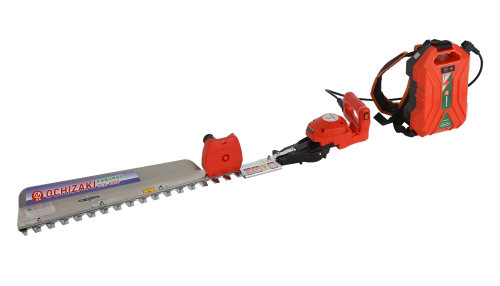Tea Harvester Maintenance and Care: Essential Tips for Extending Equipment Lifespan
Proper maintenance is key to extending the lifespan of your tea harvester and ensuring optimal performance. In this post, we share essential tips for caring for your tea harvesting equipment, from regular inspections and cleaning to troubleshooting common issues. Learn how proactive maintenance can prevent costly repairs, enhance efficiency, and maximize the return on your investment. Whether you’re a wholesaler or plantation owner, these practical tips will help you keep your machinery in top shape throughout the harvesting season and beyond.
MARKET TRENDS
12/24/20244 min read


Introduction to Tea Harvester Maintenance
Tea harvesters play a crucial role in the efficiency and productivity of tea cultivation, and their maintenance is essential for ensuring optimal performance and longevity. The significance of regular upkeep cannot be overstated, as neglecting maintenance practices can lead to various issues that affect not only the machinery itself but also the entire harvesting process.
Common wear and tear issues that tea harvesters encounter include the degradation of blades, deterioration of belts, and the buildup of dirt and debris. These challenges can hinder the harvester’s ability to operate effectively, leading to reduced harvesting efficiency and potentially lower quality leaves being collected. Additionally, mechanical failures may arise from a lack of proper care, resulting in unplanned downtime and increased repair costs. This underscores the importance of implementing a preventive maintenance strategy to address these issues proactively.
Routine maintenance not only enhances the lifespan of tea harvesters but also significantly contributes to overall productivity. By regularly inspecting and servicing equipment, tea producers can identify potential problems early, allowing for timely repairs that mitigate costly disruptions. Moreover, well-maintained harvesters typically perform more efficiently, which translates into increased throughput during peak harvesting seasons. In turn, this improved efficiency can lead to reduced operational costs, as machinery operates at its optimal capability.
Investing time and resources into the maintenance of tea harvesters can yield significant returns. Cultivators who prioritize these practices will not only extend the life of their machinery but also boost the overall effectiveness of their harvesting operations. This creates an environment where both quality and quantity can be achieved, serving to enhance the profitability of tea production in the long run.
Regular Maintenance Checks and Procedures
To ensure the longevity and efficiency of tea harvesters, implementing a structured routine of maintenance checks is essential. These procedures can be categorized into daily, weekly, and monthly tasks, each aiming to preserve the functionality of the equipment and minimize operational downtime.
On a daily basis, operators should conduct an initial assessment of the tea harvester. This includes cleaning the machine to remove debris and organic matter that may impede performance. Utilizing compressed air for blowing out the engine compartment and a soft brush for sensitive components is advisable. Moreover, checking the oil levels is critical; maintaining the proper oil level not only prevents engine wear but also enhances operational efficiency. A dipstick should be used for accurate readings, and any discrepancies must prompt an immediate oil top-up or replacement.
Weekly maintenance checks involve a more thorough inspection of several key components. Belts and blades should be examined for wear and tear, as damaged blades can adversely affect cutting efficiency. In doing so, a wrench and replacement parts may be required if discrepancies are found. Additionally, verifying that all fasteners and fittings are secure is crucial to the machine's operational integrity.
Monthly procedures amplify the depth of inspection and often necessitate specialized tools. This is the ideal time to assess the hydraulic system for leaks, ensuring that fluid levels are adequate and that seals are intact. Furthermore, electrical systems should be inspected for signs of wear, including examining battery connections and testing fuses. Keeping a detailed log of all checked items will facilitate future maintenance and quickly identify recurring issues.
Implementing these systematic maintenance checks will not only promote the efficiency of tea harvesters but also prolong their operational lifespan, thereby reducing the overall cost associated with repairs and replacements.
Common Problems and Troubleshooting Techniques
Tea harvesters, despite their advanced engineering, can encounter various issues during operation, which can affect their performance and efficiency. Some of the most common problems include engine performance issues, blade dullness, and hydraulic system failures. Understanding these problems is vital for ensuring consistent operation and extending equipment lifespan.
Engine performance problems can manifest as difficulty starting, uneven running, or stalling. These issues may often stem from fuel-related complications, such as clogged fuel lines or a dirty air filter. It is recommended to routinely inspect fuel systems and ensure that all filters are clean and replaced as necessary. Additionally, operators should check spark plugs and battery connections to enhance engine reliability.
Another prevalent concern is blade dullness, which can lead to inefficient harvesting and potential damage to the tea plants. Dull blades require more power to operate, ultimately straining the engine. Regularly inspecting the blades for wear and sharpening them when needed is crucial. Operators should note that sharpening can often be conducted on-site with the proper tools, thus minimizing downtime. In some cases, replacement may be necessary, and having spare blades on hand can expedite this process.
Hydraulic system failures, characterized by fluid leaks or unresponsive controls, represent a significant challenge for tea harvester operators. Such issues can often be traced to damaged hoses or worn seals. Regular inspection of hydraulic components is essential, and operators should be trained to identify signs of wear. If problems persist, it is advisable to consult a professional technician who specializes in hydraulic systems, as they can provide more in-depth solutions.
By being proactive about these common issues and understanding basic troubleshooting techniques, operators can effectively manage minor setbacks in tea harvester maintenance. Prompt attention to these problems helps avoid costly downtime and ensures the harvesting process remains efficient.
Best Practices for Long-Term Care and Storage
Ensuring the longevity of tea harvesters requires diligent attention to maintenance and storage practices, particularly during off-seasons when the equipment is not in use. One of the foremost steps in long-term care is thorough cleaning. After each harvesting season, it is essential to remove any debris, soil, or residual plant material from the equipment. A mild detergent solution can be used to wash metal components, followed by a thorough rinsing to prevent any corrosive residue from accumulating.
In addition to regular cleaning, lubricating the moving parts of the tea harvester is crucial. Using high-quality lubricants reduces friction and prevents wear, contributing to smoother operation when the equipment is eventually used again. Be sure to pay special attention to gears, bearings, and any other components that may require oil or grease, ensuring that they are adequately protected against rust and corrosion.
Properly securing the tea harvester is another significant practice. Storage areas should be free from moisture and ideally climate-controlled to maintain a stable environment. It is advisable to place the machine on a raised platform to protect it from ground moisture. Additionally, covering the equipment with a tarpaulin or specific protective cover helps to shield it from dust and potential water damage.
As seasons change, it is important to conduct a pre-harvest inspection. This entails checking for any signs of wear or damage and ensuring all systems are operational. Seasonal preparation also involves verifying that all safety features are functioning correctly and that the harvester is in compliance with operational standards. By following these best practices, tea harvesters can remain in optimal condition, ready for the next harvesting season while extending their overall lifespan.
